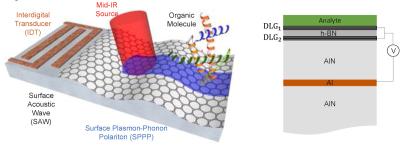POSTECH and University of Technology Sydney develop quantum LED using graphene
A collaborative effort involving POSTECH and the University of Technology Sydney has yielded an advancement in light source technology. The team used graphene to develop a quantum light emitting diode (Quantum LED) that can precisely emit light using a single atom. This innovative technology generates light by injecting charges into a luminescent material composed of a single atom.
The research team implemented this advanced light source technology using hexagonal boron nitride (hBN), a material known for its ability to stably confine electrons in various atomic defects. Unlike traditional quantum dots, which are composed of hundreds to thousands of atoms, the quantum LED developed by the team exhibits excellent quantum light source characteristics even at room temperature. This breakthrough addresses a significant challenge in the field, as hBN's wide bandgap has historically made it difficult to inject charges electrically, thus hindering the development of LED devices. To overcome this obstacle, the researchers designed a "graphene-hBN-graphene" van der Waals tunneling structure.



